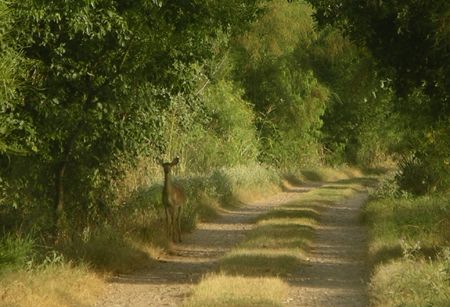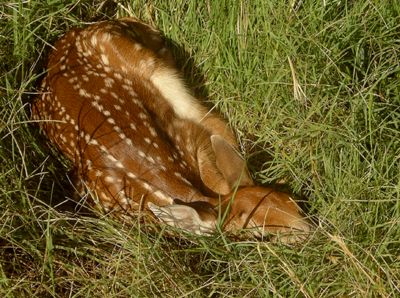
To get back to the point, the title of this essay is not a really common word, or even one that has a vast number of different connotations, but it can mean different things to different people. "Lifer" is probably most associated with career military personnel, and I found an amusing reference to such on the internet (which provides the most entertaining, if not the most accurate, research results available to the average person). This particular knowledge nugget gives one definition as "Lazy Inefficient F***er Expecting Retirement." Acronyms aside, lifer usually refers to a person who is in a situation for a very long time, be it prison, a job, a residence, a school, a best friendship, or a commitment. For one small subset of the population, though, lifer immediately brings to mind a new bird that one has never seen before. I'm talking about real birds, not jailbirds or slang for an odd person. Birdwatchers often fondly recall many of those special sightings that added a unique species to their life list.
As an entomologist, I have an advantage over birders in what constitutes a lifer. There are approximately 9,000 species of birds in the world, while there are well over 1,000,000 insects. In our area alone, there are thousands of insects, and if I travel just a short distance, there is a high chance that I'll see some bugs that are not the same as here. While a birder might, after a few years of living in a particular place, almost never see a bird species for the first time, I can reasonably expect at least one new insect sighting almost every time I am in the field, even though I've been actively studying them for over ten years.
But I didn't always concentrate so much on invertebrates. As a kid, I loved discovering all manner of animals, plants, and fungi. Even rocks and fossils attracted my attention. Things haven't changed all that much, and I still find a mushroom, flower, crystal, or fish as fascinating as a beetle, mantis, or grasshopper. With such a wide range of subjects, there is always the chance to find things I've never seen before.
One taxon is a special case: mammals. There aren't that many species, and, except for a few indecently common ones (squirrels, dogs, humans), they are not often encountered. Because mammals are easily noticed if they are around, and they happen to be more closely related to us than other kinds of animals, they tend to draw our attention more easily than, say, a spider. We note how many we see, where we see them, and raptly watch their behaviors.
Because I often hike in natural areas, I see my share of charismatic large vertebrates. I never tire of catching a glimpse of a caracara, roadrunner, armadillo, or deer. They are no longer lifers, but I like watching them just the same. I recently saw at least twenty bobwhite quail in one place. The sheer number of individuals made that encounter memorable. Sometimes just seeing a common animal act a bit out of the ordinary turns a simple sighting into a tale worthy of retelling.

During one of my hikes out at Hornsby Bend (our local sewage processing facility) this past spring, I had an unusual encounter with a common mammal. I frequently take the same route once I park my car, first walking along the gravel road along the ponds, then looping back closer to the Colorado River on a different trail. This way, I get to pass through a variety of habitats and my chances of finding interesting wildlife increases. As I started along the road, I saw a doe in the distance. She looked in my direction, then moved off the side into the trees. I figured that was the last I would see her as they are quite wary of people and usually just run away. A minute or so later, the deer appeared again at the side of the road, but closer to me and not just because I was walking in that direction. The animal had actually moved toward me as well. This was strange, and I chalked it up to a young and curious individual. I stopped walking when I saw the animal start to approach. If it had been a buck during the rut I might have been a bit worried, as they can get aggressive. However, this doe seemed to be simply investigating and so I stayed still, knowing that they have a hard time seeing a stationary person. The deer flicked her ears a few times, stepped closer by a few feet and seemed to be trying to figure out what I was. The distance was still pretty wide, so I thought she probably could not smell me yet. After a short stare-down, the deer once again walked into the woods, away from the pond.
I continued my walk and when I got to the point where the deer had disappeared, I looked into the trees but saw nothing. After that, I was distracted by the insects, spiders and birds that I was photographing and forgot about the deer. I reached the end of the pond and took a road down towards the river. At that point are several large concrete sewage processing tanks. There are always lots of spiders, wasps, and other insects on the sides, and I inevitably spend some time exploring that area. I then walked through a grassy area where fishermen and birders often park their vehicles, but then remembered that I wanted to check inside a smaller concrete structure that usually shelters the webs of spiders. As I turned to backtrack about thirty feet to the tank, I saw something that I never expected. It was a lifer. There on the ground, not ten feet away, was a fawn.
Over the years, I've repeatedly looked for fawns hiding while their mothers forage. I have even spent time searching an area where I'd seen a doe acting like she didn't want to leave, on the slim chance of finding that elusive little speckled baby lying low to elude predators. In one place where I walked regularly, I never found the fawn, but a couple of days later did find a pair of tiny hooves - all that was left after some other large animal DID find that baby. From the time I was in kindergarten, I'd seen photos of the classic fawn hiding down in the foliage, and felt the twinge of envy that I had never found one myself.
 Well, this was it; every bit as exciting as I had imagined. Not technically a lifer as I'd seen plenty of white-tails and fawns, but to see this classic example of camouflage in such a startling place... I couldn't believe my luck! The fawn was lying in a patch of Bermuda grass that had not been mowed recently. How a spotted, rust-colored animal the size of my dog could have escaped my notice in green vegetation that was just twelve inches high was beyond me. I must have walked within five feet of the little creature. Once I saw it, my first reaction was to try to get a photo as quickly as possible before it realized that its cover was blown. At first, I could see that its head was up a bit and it was looking at me from the back corner of its eye. I glanced briefly at where I had just walked and when I looked back, its head was hugging the ground and the little animal had closed its eyes. In short order, I circled around at what I thought was a respectful distance and snapped some photos. I could see how tempting it would be to reach down and pet it, like a domestic foal or calf. Its sides were barely moving as it quietly panted in the increasingly hot sun. I thought about how it would soon have to move to a shady area.
Well, this was it; every bit as exciting as I had imagined. Not technically a lifer as I'd seen plenty of white-tails and fawns, but to see this classic example of camouflage in such a startling place... I couldn't believe my luck! The fawn was lying in a patch of Bermuda grass that had not been mowed recently. How a spotted, rust-colored animal the size of my dog could have escaped my notice in green vegetation that was just twelve inches high was beyond me. I must have walked within five feet of the little creature. Once I saw it, my first reaction was to try to get a photo as quickly as possible before it realized that its cover was blown. At first, I could see that its head was up a bit and it was looking at me from the back corner of its eye. I glanced briefly at where I had just walked and when I looked back, its head was hugging the ground and the little animal had closed its eyes. In short order, I circled around at what I thought was a respectful distance and snapped some photos. I could see how tempting it would be to reach down and pet it, like a domestic foal or calf. Its sides were barely moving as it quietly panted in the increasingly hot sun. I thought about how it would soon have to move to a shady area.
Only then did I remember the doe I'd seen earlier. That was the mother! No wonder she was nervous and yet wanted to know more about a potential intruder. I was sure that she was over in the adjoining woods and would probably quickly check on her offspring once I was safely out of range. Wasting no time, I walked away from the still motionless fawn. I looked back after just a few steps and could see only the slightest hint that it was there, and really only because I knew where it was. What an ideal hiding place!
I cannot remember if I saw anything else of interest on the rest of that hike. Finding something that I had anticipated for five decades sort of overwhelmed my attention. In spite of all the lifers within the invertebrate fauna that I find on a regular basis, this one special instance of a common species topped everything. The joyful satisfaction of that brief encounter still returns with each recollection.